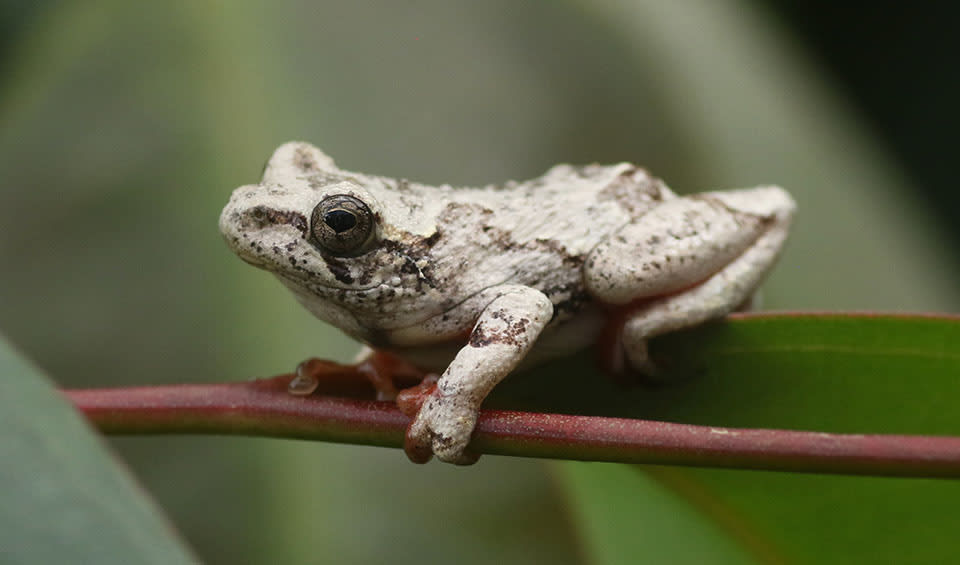A small, vibrant amphibian belonging to the family Hyperoliidae, primarily found across sub-Saharan Africa. Known for their striking colors and adaptability, these frogs are a common sight in the wetlands and reedy marshes that dot the landscape. They are notable for their petite size and vivid appearance and display a wide range of colors from greens and blues to reds and yellows. Their skin can change color in response to environmental factors such as temperature and humidity, a trait that provides excellent camouflage against predators.
One of the most fascinating aspects of these frogs is their sexual dimorphism. Males are often smaller and brightly colored, especially during the breeding season, to attract females. They also develop nuptial pads on their fingers to aid in grasping females during amplexus, the mating embrace. They can also thrive in a variety of aquatic environments but are particularly fond of reeds and other tall vegetation around permanent water bodies such as lakes, ponds, and rivers. Their distribution spans across a wide range of African countries, making them one of the continent’s most widespread amphibian species.
While Common Reed Frogs are generally not considered endangered and are capable of thriving in disturbed or human-altered environments, they are still vulnerable to severe habitat destruction and pollution. As with many amphibians, they are sensitive to changes in water quality and availability due to their permeable skin and aquatic reproductive needs.
Distribution
 Burundi
Burundi Central Af. Rep.
Central Af. Rep. DR Congo (Kinshasa)
DR Congo (Kinshasa) Ethiopia
Ethiopia Kenya
Kenya Rwanda
Rwanda Sudan
Sudan Tanzania
Tanzania Uganda
UgandaAnything we've missed?
Help us improve this page by suggesting edits. Glory never dies!
Suggest an editGet to know me
Terrestrial / Aquatic
Altricial / Precocial
Polygamous / Monogamous
Dimorphic (size) / Monomorphic
Active: Diurnal / Nocturnal
Social behavior: Solitary / Pack / Herd
Diet: Carnivore / Herbivore / Omnivore / Piscivorous / Insectivore
Migratory: Yes / No
Domesticated: Yes / No
Dangerous: Yes / No




